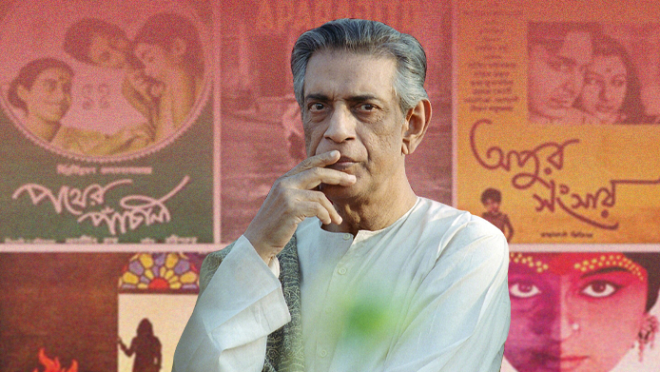Commemorating Satyajit Ray: The film maker, the author, the artist
Commemorating Satyajit Ray: The film maker, the author, the artist

In 1967, TIME magazine featured a filmmaker from Calcutta on its cover, not for winning any Oscars or Golden Globes, or for any particular achievement in that year. The magazine simply wanted to feature him for what the magazine claimed, “an emerging force in global cinema” such as the influence of the great man named Satyajit Ray who was born on this day in 1921.
Born in an affluent family to the famous father Sukumar Ray, the bug for creativity and art was bound to bite the young Satyajit. He completed his degree in economics from Presidency College in Calcutta and getting a diploma in Fine Arts from Santinketon, he started working for a British advertisement agency as a Junior Visualiser. This artistic education, especially the emphasis on Indian traditional forms and visual storytelling, deeply influenced Ray’s visual style in cinema, noticeable in the framing, composition, and emotional restraint of his later films.
Along with his day job as a visualiser, he also worked as a freelance book cover designer, many may not know that Satyajit designed his own typeface. When he couldn’t find a suitable font for a book cover, he hand designed one, Ray Roman. It was later digitised and is still admired by designers today.
His knack for cinema quickly developed while working in the advertisement agency. In 1950, Ray assisted Jean Renoir during his shoot of The River in Calcutta. Renoir encouraged Ray to pursue his dream of making Pather Panchali. While working with Keymer, Ray was sent to London for six months in 1950. There, he watched Bicycle Thieves by Vittorio De Sica, an experience that confirmed for him that films could be made with non-professional actors, minimal budgets, and raw emotion. He famously said, “The film made me decide to become a filmmaker.”
His first film Pather Panchali was released in 1955, and it stands as one of the most brilliant pieces of cinema ever created. However, the road to this success was not smooth. Satyajit was clear about how he wanted to create the film. He did not recruit any top level actors or did not follow the conventional methods of script writing to attract commercial investors. To initiate filming, he borrowed against his life insurance, sold personal belongings, and his wife, Bijoya, pawned her jewelry. Due to the limited funds, the shooting of the film took place over three years with unintentional intervals. Satyajit assembled a team of novices, including cinematographer Subrata Mitra, who had never operated a movie camera before. This inexperience, however, contributed to the film’s innovative and authentic aesthetic.
After the global success of Pather Panchali and the Apu Trilogy, Ray was approached by major Hollywood studios, including Columbia Pictures and MGM. Ray was seriously engaged in a Hollywood project titled The Alien in the late 1960s. The script, written by Ray, was optioned by Columbia Pictures. It was about a benevolent alien stranded in a Bengali village, long before Spielberg’s E.T. Speilberg later touted that E.T “borrowed” quite heavily from The Alien. The circulation of the script he wrote greatly impacted Satyajit’s attitude towards Hollywood and he decided to not pursue any other projects. Satyajit Ray famously said, “I would rather make a film in Calcutta on one lakh rupees than go to Hollywood and make a million-dollar film with the condition that I would make it the way they want.”
His rejection of Hollywood is not seen as a missed opportunity rather a declaration of his artistic independence. He never made a film outside of India and time and time again he worked with local actors and within modest budgets. Despite these constraints, his films received universal recognition, and in 1992, the Oscars honoured him with a lifetime achievement award. On his birthday, we celebrate a true artist who has never compromised the integrity of his creation.


